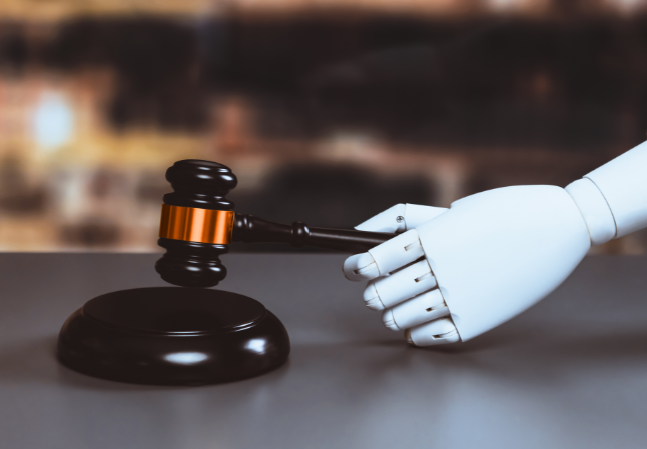Welcome! Save 30% on all CLE, CPE, and Professional Skills webinars, plus 15% off any annual pass with code HOLIDAY25
About the Course
Introduction
This CLE course will guide patent counsel on overcoming the challenges of obviousness in biologics patent claims in the U.S., Europe, and China. The panel will examine the similarities and differences between claim types that have the best chance of success. The group will also discuss recent case law and critical issues that arise.
Description
Several of the top-selling drugs are biologics. Unsurprisingly, patents relating to new biologics products are often challenged in patent offices and courts around the world, as well as the PTAB. When global litigation is the norm, it is vital to understand and coordinate strategies around the world.
There is an abundance of decisions on written description in the U.S., but relatively few Federal Circuit cases address the obviousness of inventions related to biologics. Hundreds of IPR petitions have been filed at the PTAB alleging biologic claims are not patentable under Section 103.
In Europe, it is particularly challenging to establish an inventive step for new antibody products, with strict tests for when a new product is considered inventive, and what scope of patent claim might be obtained. Also, China has seen rapid growth as a destination for biologics patents.
Listen as our authoritative panel of patent attorneys provides an in-depth analysis of biologic IPR petitions. The panel will review the similarities and differences between biologic claim types that have the best chance of success in the U.S., China, and Europe and the obviousness issues that may arise. The panel will also review current EPO and China practice, discuss recent case law, and outline key issues that arise. The panel will offer guidance addressing obviousness issues in biologics inventions.
Presented By

Mr. Diner practices all aspects of intellectual property law, including strategic patent portfolio management, litigation, prosecution, opinion preparation, due diligence investigations, and interferences. His litigation practice has involved diverse technical areas, ranging from protecting the rights of innovative pharmaceutical companies in Abbreviated New Drug Application (ANDA) litigations to defending clients’ right to use certain medical devices. He served as the managing partner of the firm’s Brussels office for six years. His knowledge of the European legal system and how it differs from that in the United States allows him to counsel both European and domestic clients on a full range of IP issues.

Ms. Feng focuses her practice on biotech and pharma patent, chemical engineering, material, and chemistry. She handles all phases of patent prosecution, reexamination, patent invalidation, and patent litigation and counseling, including infringement as well as validity analysis. She frequently lectures in U.S. and European multinational chemical, pharmaceutical and biotech companies concerning patent prosecution and enforcement in China.

Dr. Ford is a European and UK patent attorney with extensive experience drafting patent applications and prosecuting them globally. She has particular experience of patent prosecution at the European Patent Office (EPO) in the fields of biotechnology (including antibodies, vaccines, genes and proteins), and pharmaceuticals (including drug formulation, diagnostics and new administration regimes). Alongside Dr. Ford’s substantial experience with EPO opposition and appeal proceedings, she also advises clients on all aspects of patent strategy, including coordination of related patents and patent applications worldwide, and interactions between drafting, prosecution and opposition matters.

Dr. Mouta-Bellum focuses on drafting and prosecuting patent applications in the fields of biotechnology and biosimilars, client counseling, and patent portfolio management. Her patent prosecution experience is focused on patents directed to protecting antibody-related inventions, methods of diagnosis and treatment, transgenic technologies, and metabolic engineering of microorganisms for the production of bioderived polymers. She also has experience with stem-cell and regenerative medicine-related technologies, particularly in the vascular and organ repair areas.
-
This 90-minute webinar is eligible in most states for 1.5 CLE credits.
-
Live Online
On Demand
Date + Time
- event
Tuesday, May 28, 2024
- schedule
1:00 p.m. ET./10:00 a.m. PT
- The U.S.
- USPTO treatment
- Court treatment
- Strategies for overcoming obviousness challenges
- Europe
- EPO treatment
- Court treatment
- Strategies for overcoming obviousness challenges
- Relationship between non-obviousness arguments and claim scope
- China
- Agency treatment
- Court treatment
- Strategies for overcoming obviousness challenges
The panel will review these and other key issues:
- What evidence should counsel provide to support its assertion of nonobviousness in biologics patents?
- How can patent counsel guide applicants during patent application drafting to reduce the likelihood of rejection?
- How have the different jurisdictions treated obviousness issues in biologics patents?
Unlimited access to premium CLE courses:
- Annual access
- Available live and on-demand
- Best for attorneys and legal professionals
Unlimited access to premium CPE courses.:
- Annual access
- Available live and on-demand
- Best for CPAs and tax professionals
Unlimited access to premium CLE, CPE, Professional Skills and Practice-Ready courses.:
- Annual access
- Available live and on-demand
- Best for legal, accounting, and tax professionals
Unlimited access to Professional Skills and Practice-Ready courses:
- Annual access
- Available on-demand
- Best for new attorneys
Related Courses

Evaluating and Acquiring Patent Portfolios: Key Considerations
Thursday, February 19, 2026
1:00 p.m. ET./10:00 a.m. PT

Evaluating and Acquiring Patent Portfolios: Key Considerations
Available On-Demand

Invalidity Opinions in Patent Litigation: Shielding Against Liability
Available On-Demand

Foreign Filing Licenses: Key Considerations, First Filing Requirements, Design Patent Unique Issues, Export Controls
Tuesday, February 24, 2026
1:00 p.m. ET./10:00 a.m. PT



